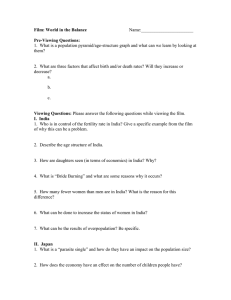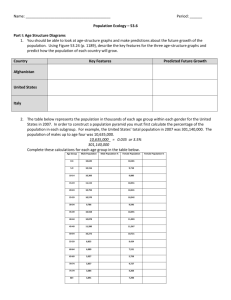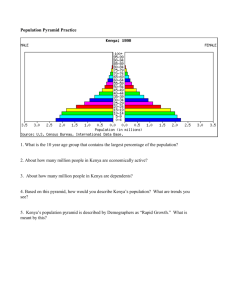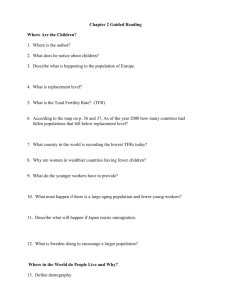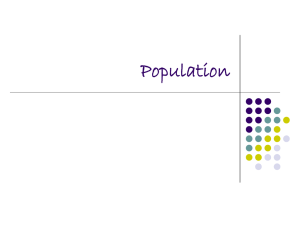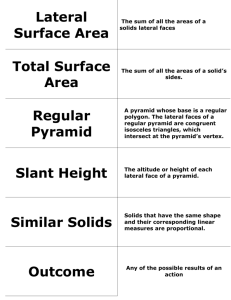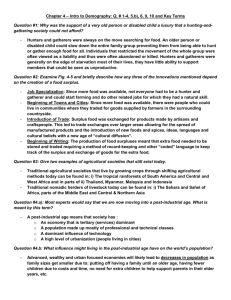Global Population Dynamics: Worksheet for Geography 12
advertisement
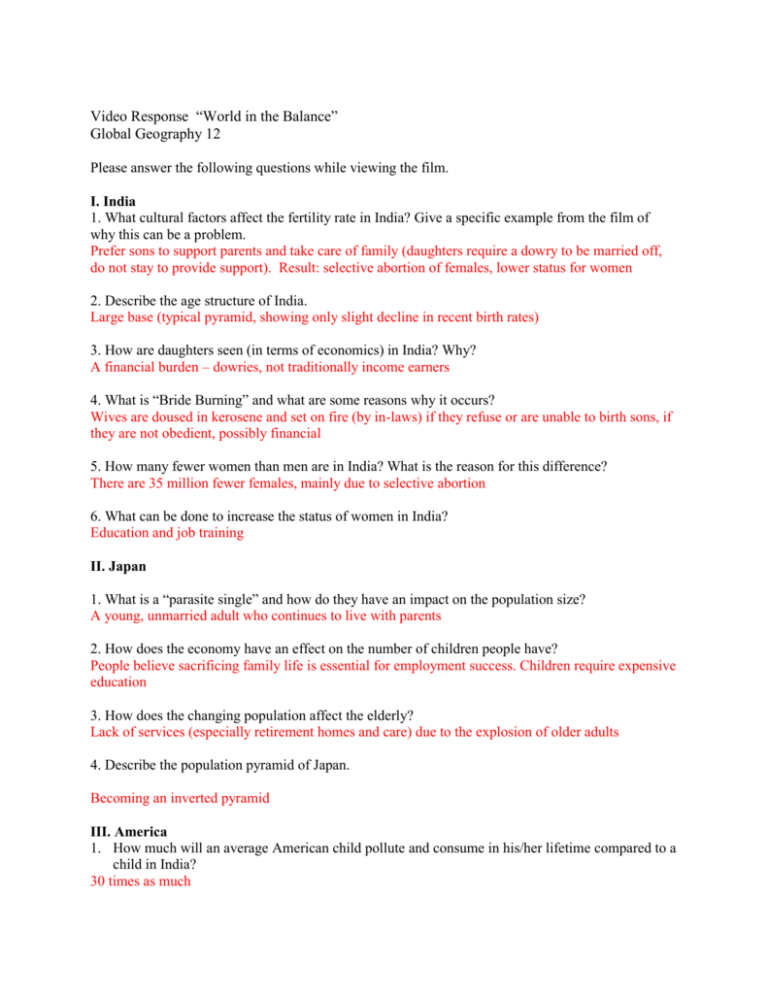
Video Response “World in the Balance” Global Geography 12 Please answer the following questions while viewing the film. I. India 1. What cultural factors affect the fertility rate in India? Give a specific example from the film of why this can be a problem. Prefer sons to support parents and take care of family (daughters require a dowry to be married off, do not stay to provide support). Result: selective abortion of females, lower status for women 2. Describe the age structure of India. Large base (typical pyramid, showing only slight decline in recent birth rates) 3. How are daughters seen (in terms of economics) in India? Why? A financial burden – dowries, not traditionally income earners 4. What is “Bride Burning” and what are some reasons why it occurs? Wives are doused in kerosene and set on fire (by in-laws) if they refuse or are unable to birth sons, if they are not obedient, possibly financial 5. How many fewer women than men are in India? What is the reason for this difference? There are 35 million fewer females, mainly due to selective abortion 6. What can be done to increase the status of women in India? Education and job training II. Japan 1. What is a “parasite single” and how do they have an impact on the population size? A young, unmarried adult who continues to live with parents 2. How does the economy have an effect on the number of children people have? People believe sacrificing family life is essential for employment success. Children require expensive education 3. How does the changing population affect the elderly? Lack of services (especially retirement homes and care) due to the explosion of older adults 4. Describe the population pyramid of Japan. Becoming an inverted pyramid III. America 1. How much will an average American child pollute and consume in his/her lifetime compared to a child in India? 30 times as much 2. How will the “Baby Boomers” affect the population of the country? Increased retirements – demand for home services, nursing homes, pensions 3. What is “Global Aging”? Overall, lower birth rates and death rates mean that there are more elderly people than ever before IV. Sub-Saharan Africa 1. How does AIDS affect population size? Reduced numbers of younger adults (reproductive years) 2. What is “Family Planning” and how has it worked in Kenya? Prevention of unwanted pregnancies, fertility rates dropped from an average of 7 births per woman to 4. 3. What happens when the death rate falls and the birth rate remains high? Population explosion – sustained population growth 4. How has AIDS affected the lives of people in Nairobi? What does this mean for women? Huge numbers of orphans, younger women must leave school to support siblings, prostitution to survive 5. What does the population pyramid of countries dealing with large numbers of AIDS look like? How is this very different from countries where AIDS is not as big a problem? Like a pyramid with the workforce cohorts “carved away”, leaving large dependent populations 6. How does family planning affect the abortion rate? It greatly reduces the abortion rate. 7. What can countries like India and Kenya learn about economics from East Asia? They can become more like developed countries faster if they decrease birthrates and invested the money saved on child services in job training and higher education.
